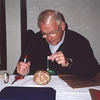This is a drawing showing another form of motions in a planets interior.
Click on image for full size
Motions in Neptune's Interior, part 2
Motions, or currents in the interior of a gas-giant planet such as Neptune may be very different from the motions typical of the Earth's interior.
A second idea for the motions in the interior of a gas-giant planet is shown in this picture. Strong heat coming from within a planet can cause this kind of motion to take place.
The drawing shows that underneath the clouds of Neptune, layered cylinders of material may be in motion, rolling in different directions. It is thought that this pattern may be in operation because the tips of the cylinders may correspond to the striped pattern of clouds seen in the atmosphere.
It is not known which of these two kinds of motion, one typical of the earth, and one like this, prevails in the interior of Neptune.
You might also be interested in:

In astronomy, it is a usual procedure to calculate the luminosity of a star, and this calculation indicates the energy and the temperature of the star. When the luminosity of the outer planets was calculated,
...more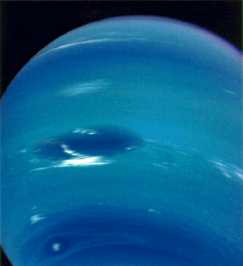
Like Jupiter and all the giant planets, Neptune's appearance shows a striped pattern of clouds. Other cloud shapes seen over time include a small dark spot, the "scooter" and the Great Dark Spot. The Great
...more
Motions in the interior of a planet helps to carry heat from the core to the planet's surface. The drawing to the left illustrates a kind of global motion that is typical of motions in the atmosphere as
...more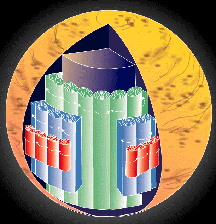
Motions, or currents in the interior of a gas-giant planet such as Neptune may be very different from the motions typical of the Earth's interior. A second idea for the motions in the interior of a gas-giant
...more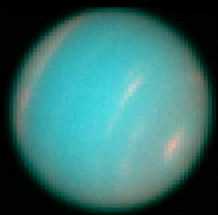
This image shows the new Great Dark Spot of Neptune, which was discovered using the Hubble Space Telescope. The image shown here, shows a "hole" in the clouds of Neptune in pink, in the northern hemisphere,
...more
Atmospheres of the giant planets have definitely evolved from their formation out of the primitive solar nebula. How much they have evolved remains to be seen, however. Because of their enormous gravity,
...more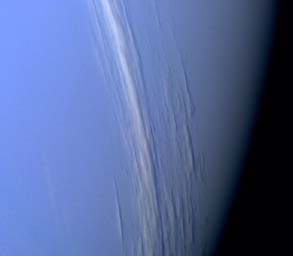
This image shows some cirrus clouds, extending for many kilometers across the disc of Neptune. These clouds are somewhat high up, for they can be seen to cast shadows on the lower clouddeck, which is 35
...more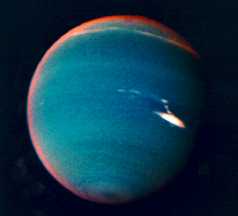
This image of Neptune uses false colors to bring out the hazes of smog, which can be seen in red along the limb of Neptune, at the edge of the picture. These hazes of smog are found at very high altitudes,
...more



